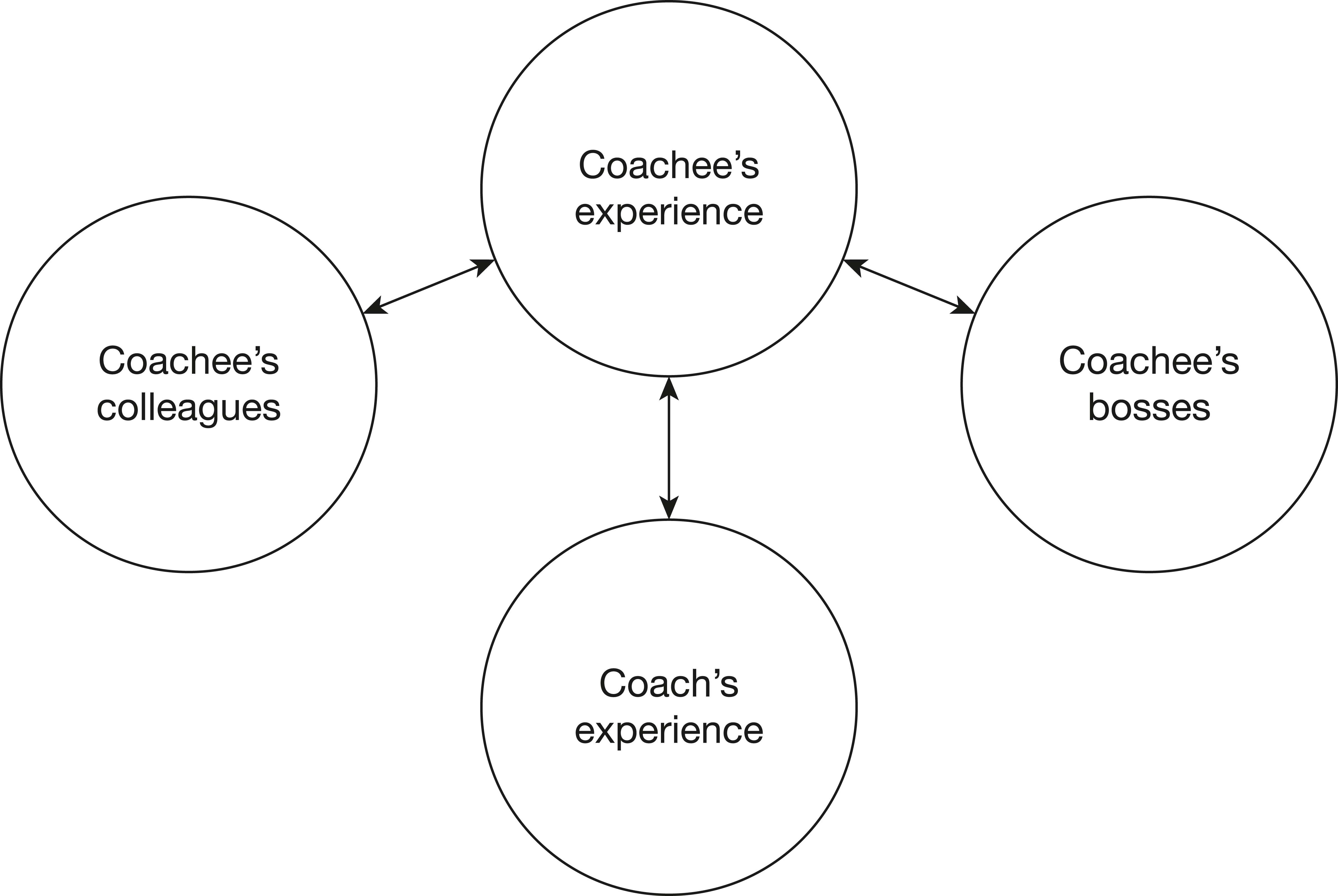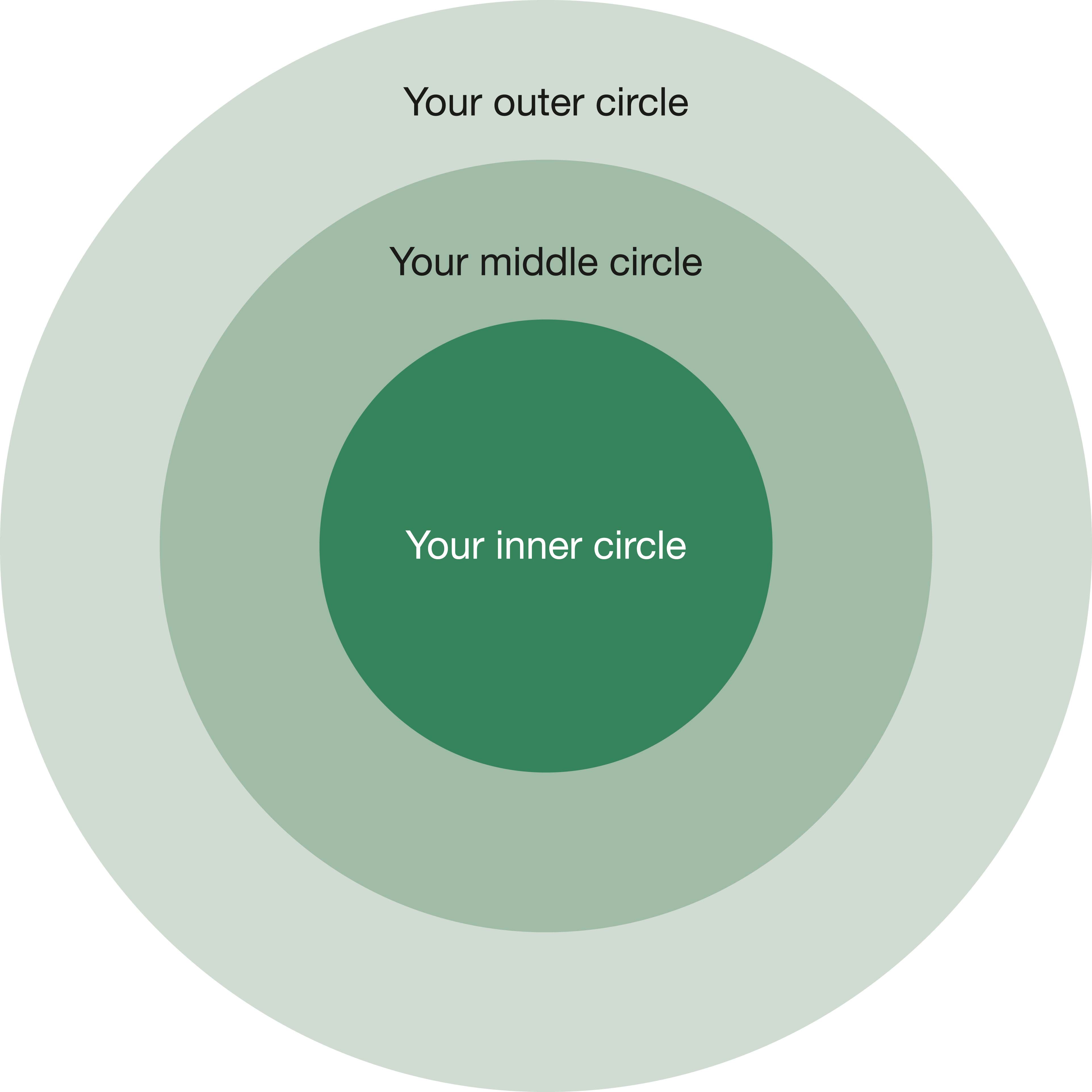Chapter 10 - Building support, influence and learning
Download All Figures and TablesNote Click the tabs to toggle content
Fitting into the coachee’s network
Download Figure
It’s rare for a coach to be the only source of influence and learning for a coachee. The coachee will normally have a network of other people, who they use in various learning and influence roles. Understanding who the key people in those networks are, what their influence is and how that influence is applied gives the coach a clearer picture first of the systems, of which the coachee is a part, and second, of where the coaching relationship can most usefully be focused.
Questions to help the coach understand include:
- Who has a clear perspective on how you’re doing in this area?
- Whose opinion do you trust and value on this?
- What would they say?
- Who knows about this aspect of your desired career?
- Who else would you ask about this?
- What would be your dream list of helpers on this matter?
Revans’s questions
Revans, the inventor of action learning (Revans, 1998), advised the use of three questions in helping learners to work out who they need to talk with:
- Who Knows? (Gives information the coachee needs).
- Who Can? (Considers the dimension of power).
- Who Cares? (Considers the problem of will).
Who would want to network with me?
One has to ask the questions ‘Why?’ and ‘How?’ to fully understand the power of building effective networks.
Why?:
- Ask the coachee to think about how to solve a problem outside their work. They usually go through a list of who they know could help.
- Keep challenging the following ‘Suppose you didn’t know anybody who knew? What would you do then?’
- Draw a diagram with lots of links and nodes back to the original person – friends of friends, contacts of friends, business contacts.
- Consider the benefits of having that type of network and what it would mean for the individual.
- Links can be made to show how an individual gains skills and the degree to which any one person has the skills and knowledge they will need to help them achieve their development plan.
How?:
- The coach explores ‘how’ in a number of ways
- Make direct contact themselves.
- Helping coach the individual through what they are going to say when they make the call.
- Helping the individual think about the benefits of what they might give in return for developing a new relationship.
- Helping people cope with how individuals might feel if you ask them to introduce them to one of their contacts.
- Helping people think outside the box in terms of what they could build.
Who do we know?
We often forget who our contacts are and how they can help us (and us help them). This exercise explores how people we know can develop us further and help us get to where we want to go.
Ask your coachee to draw out the circles in Figure 10.2 on a large sheet of paper. Think about who you know, in whatever context and however loosely, and write their names in the appropriate circle. Your inner circle might include, close friends, family and trusted work colleagues. Your middle circle might include people you are in contact with who you value but you are not in touch with as frequently, and the outer circle are acquaintances you could contact but haven’t done so yet, in spite of their being potentially useful.
Then ask them:
- What networks are you going to develop further? For what purpose? How?
- What existing relationships do you need to develop? Can you identify at least one person in each ring?
- Should you try to promote or demote anyone up or down a level of the circle?
- What is the relative status of the people who make up your circles?
- What does each circle represent?
- Do you want to reframe this in some way?
- What is the potential impact of each person on you and you on each person?
- Can you leverage this for mutual advantage?

Raising personal profile
One way of raising one’s profile in an organisation is to ‘curate knowledge’ for their network. Ask your coachee to consider what their networks want to know. Encourage them to think about how they can map and signpost current reports or news items, or offer opinion pieces to their network as a way of increasing their presence and profile. They could create an action plan for doing this.
Managing politics
Politics is a fact of life in all sectors of employment. Some people relish the politics and treat it as an intellectual challenge; other people find it deeply distasteful and try to avoid any political contamination. Both strategies have downsides – the former, because being seen as political equates to being untrustworthy; the latter, because being politically naive makes people highly vulnerable to change.
A common challenge for coaches is to help coachees develop sufficient political astuteness to handle and work with organisational politics, while retaining their authenticity and self-respect. (An excellent source of further reading is Political Dilemmas at Work, by Gary Ranker and his colleagues --- see the references list.)
Among the helpful questions are:
- Who are the key players in this situation?
- What are their overt and covert motivations?
- What will make them consider you/your team as a key part of their strategy?
- What resources and skills do you have that they will find useful in achieving their objectives?
- What have you done/could you do to make them aware of you/your team as a politically strategic resource?
- What core values do you want to uphold in yourself, regardless of pressures from others?
- How can you establish boundaries around those values without creating enemies?
- What resources do you have and what can you do, to get advance warning of politically motivated change?
- What resources can you muster to block damaging, politically motivated change?
- When would be the best time to have those resources in place? (When would be too late?)
- How much in credit is your ‘favour bank’?
- How clear are you about the intent (purpose) of your boss? Your boss's boss? Key colleagues?
- How can you ensure you are aware of the undercurrents in the organisation?
- What will enable you to remain authentic? (True to yourself?)
- What principles will you not let go of?
- Who are your champions and supporters? How are you keeping them motivated to support you?
Turning problems into opportunities
A core role for coaches is to help clients move from a ‘glass half empty’ perspective to a ‘glass half full’ one. Here, follow some practical questions you can ask your coachee to assist this mindshift.
- What new opportunities does the identified problem bring?
- What does this problem change?
- What can you do now that you couldn’t before?
- What can you NOT do now that you could before?
- What do you want now that you didn’t want (as strongly) before?
- What can you let go of/stop doing that will free up time and energy for other things?
- What has become clearer as a result of this?
- What decisions/actions has this pushed higher up your agenda?
- What matters less to you now?
Stimulate positive reflection and action as illustrated in Table 10.1:
Download TableWhat can/should I learn from this? |
What change do I want to bring about in the circumstances? |
What change in behaviour does that require in me? |
For the immediate situation? |
Now? |
Now? |
Table 10.1 Turning problems into opportunities – reflection and action
Useful questions in the ‘What can/should I learn from this?’ box:
- Did you see this coming?
- If you did, what prevented you taking avoiding action?
- If you didn’t, what prevented you from seeing it?
- Is this a repeated pattern?
- What would you like to learn from this?
- What will you learn from this?
- What benefits will flow if you demonstrate to others that you have learnt from this?
- What strengths did you demonstrate in this situation?
Useful questions in the ‘What change do I want to bring about in the circumstances?’ box:
- What fallout do you need to manage/ameliorate?
- How can you prevent longer-term negative consequences?
- How motivated are you to prevent this recurring?
- How can you use the situation to your own or the organisation’s advantage?
- Is this an opportunity to tackle a number of related issues you (or others) have been avoiding?
Useful questions in the ‘What change in behaviour does that require in me?’ box:
- What learning and performance goals should you set yourself as a result of this?
- What could you do more to bring the change in circumstances about?
- What could you do less of?
- What opportunities can you find to practise these different behaviours?
- Ask your coachee to identify the worst-case scenario by imagining what could have happened to make the situation worse. This will put things into perspective. An absence of negatives will start their journey into positive territory.
Finding opportunities in problems
Along the same lines, you can redirect the client’s attention to their innate resilience and optimism, using questions such as:
- What are your unused skills/resources?
- What are your natural talents?
- How could you use some of these?
- What opportunities do you let go by?
- What ambitions remain unfulfilled for you?
- What could you accomplish if you put your mind to it?
- What could you become good at if you tried?
- What opportunities should you be developing?
- Which role models could you be emulating?